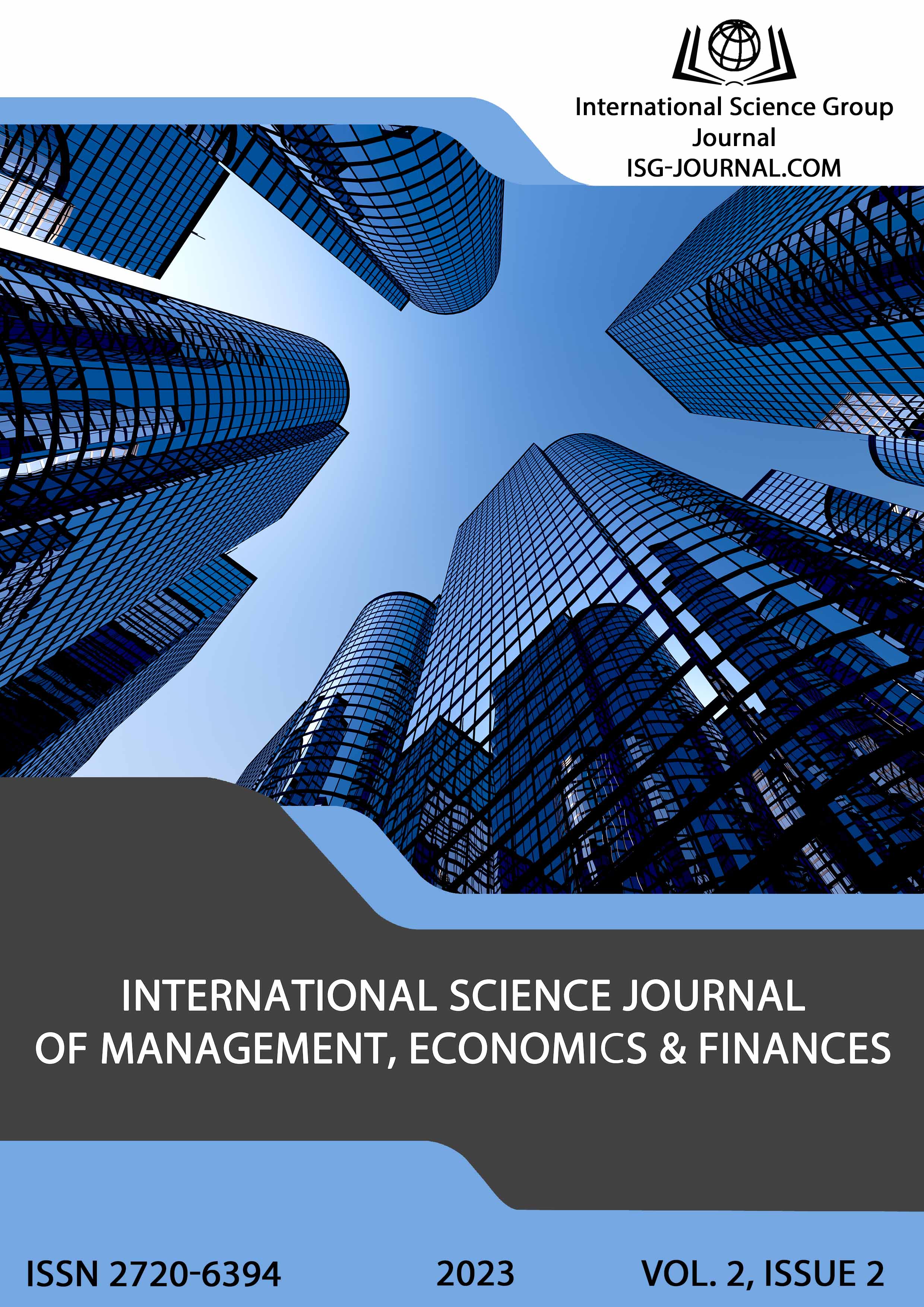Corporate partnership as a form of implementation of the concept of sustainable development of the company
DOI:
https://doi.org/10.46299/j.isjmef.20230202.13Keywords:
corporate partnership, motivation, continuous improvementAbstract
Corporate partnership is considered as a key and integral factor affecting the success of the implementation of sustainable development of an industrial enterprise, because thanks to sufficiently motivated and educated employees, companies can better meet the expectations of consumers. In this case, we can think about the implementation and development of corporate partnerships, using the coherence between the needs of the company and the needs of employees through the effective implementation of motivation. Partnership primarily requires not only flexible, strong and continuous relations, which is a key factor for profitable cooperation, but also a constant connection of know-how, competence of both partners, successful motivation and search for new partners to gain a competitive advantage over other companies. Therefore, this article reveals an innovative approach to the development of corporate partnership using elements of the principles of sustainable development. In addition, the article analyzes the regularity between the understanding of one's own influence on the development of the company and the need to change the principles of financial motivation of employees.
References
Гінтер, К., & Шнайдер, В. (2018). Партнерство між підприємствами: управління ризиками та успіхом. Берлін: Springer.
Кросс, Р., & Парсонс, Л. (2017). Партнерство та управління в епоху глобалізації.
Мартінес, М. Г., & Бануельос, Р. М. (2018). Партнерство для сталого розвитку: переваги та виклики. Мехіко: CEPAL.
Розенфельд, С., & Ліндерман, М. (2018). Партнерство на глобальному рівні: теорія та практика. Бостон: Harvard Business School Press.
Doherty, A., Misener, L., & Cuskelly, G. (2017). Managing sport business: An introduction. Routledge.
Faulkner, G. P. (2019). The partnership book: How to write a partnership agreement.
Osborne, S. P., & Brown, K. (2018). Managing change and innovation in public service organizations. Routledge.
Басараб, О. (2016). Управління партнерством: підхід до організації співпраці. Київ: Наукова думка.
Валігура, І. (2019). Партнерство як феномен сучасного суспільства. Наукові записки Тернопільського національного педагогічного університету імені Володимира Гнатюка, 1(74), 54-58.
Головко, М. (2018). Формування ефективних партнерських відносин в бізнесі. Журнал наукових публікацій молодих вчених "Науковий огляд", 4(4), 7-11.
Литвинова, І. (2016). Партнерство як складова ефективності взаємодії суб'єктів ринку. Економіка та держава, 3, 63-66.
Перелісна, І., & Савченко, І. (2017). Партнерство як форма організації взаємодії між університетом і бізнесом. Соціально-економічні проблеми і держава, 1(16), 157-162.
Скрипник, О. (2019). Розробка стратегії розвитку партнерства на підприємстві. Економіка та суспільство, 21, 201-206.
Чорна, І. (2018). Партнерство у сфері соціальних послуг: проблеми
Сєрова Л.М. Оцінка стану сталого розвитку регіону. Соціально-економічні проблеми і держава. 2018. Випуск 1 (18). С. 48-54.
Савицька Л.Г. Заощадливе виробництво як інструмент сталого розвитку підприємства. Науковий вісник Херсонського державного університету. Серія "Економічні науки". 2016. Випуск 17. Т. 1. С. 62-65.
Кузьменко О.С. Система показників сталого розвитку підприємства в умовах глобалізації економіки. Бізнес Інформ. 2019. № 5. С. 103-109.
Павленко О.О., Слободяник О.В. Основні напрями сталого розвитку та їх вплив на економіку України. Вісник Чернігівського державного технологічного університету. Серія: Економічні науки. 2018. Випуск 2(88). С. 5-9.
Downloads
Published
How to Cite
Issue
Section
License
Copyright (c) 2023 Василь Рябцев

This work is licensed under a Creative Commons Attribution 4.0 International License.






